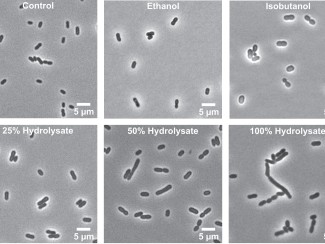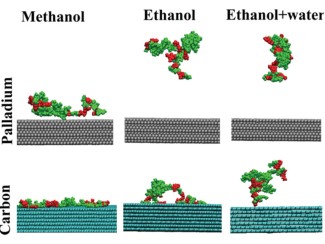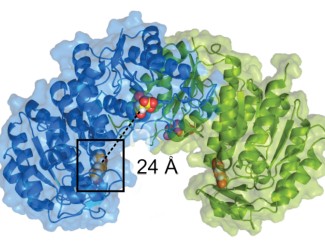
New research from the University of Wisconsin–Madison decodes the evolutionary pathway of regulatory proteins, the molecules that help control gene expression.
The findings from the Raman Lab in the Department of Biochemistry recently published their findings in the journal Cell Systems. Here’s a rundown on what they discovered:
- Proteins acquire and lose functions through evolutionary processes as cells adapt to changes in their environment over time.
- Protein evolution is well studied in certain enzymes but is understudied in regulatory proteins, which help control gene expression.
- A new, comprehensive study of the evolution of one regulatory protein reveals that how proteins evolve to gain and lose functions over time differs among classes of proteins. While some proteins evolve in a stepwise manner, slowly gaining or losing functions over time, proteins tasked with controlling important functions such as gene expression follow an evolutionary pattern that protects them from performing multiple functions simultaneously.
Background
The finches of the Galapagos, famously described by Darwin, are often used as the quintessential example of evolution. Over time, naturally occurring genetic mutations led to small, incremental changes in the birds’ appearances. Changes that gave finches an advantage were passed on to subsequent generations, eventually resulting in a variety of beak and body shapes well-adapted to various diets and foraging techniques.
Biomolecules, too, evolve over time to acquire new functions and lose unnecessary ones in response to changes in a cell’s environment, such as exposure to new molecules or the introduction of pathogens. This evolution is an ongoing process that favors mutations that allow organisms to function effectively and efficiently.
For example, scientists know that enzymes — a class of proteins responsible for starting and speeding up biochemical reactions — evolve incrementally. Individual mutations accumulate, ultimately giving the enzyme a new function in a cell.
But this pattern of evolution does not hold true for all classes of proteins.
Why do evolutionary patterns differ among proteins?
While some proteins can evolve incrementally to alter their functions, sometimes even performing multiple functions in the steps along the way, regulatory proteins have a more delicate system to balance.
Regulatory proteins help to control gene expression, turning genes on and off like a light switch. If a single light switch controls the expression of multiple genes, it becomes harder to control expression of just one of the genes. This is why regulatory proteins typically have a limited set of functions: Performing multiple, related functions may lead to catastrophic effects, including cell death, altered gene expression or uncontrolled cellular division, which can result in tumors. The stakes of mutating and evolving are higher when a protein’s function is so important and complex.
How have scientists made progress?
To better understand the evolutionary trajectory of regulatory proteins, Vatsan Raman and researchers in his lab mapped the evolution over millennia of a specific kind of regulatory protein called a transcriptional regulator. This protein helps to control the rate at which RNA is synthesized from DNA.
They extrapolated a probable history of the protein’s mutations using computer modeling. This approach gave them hundreds more DNA sequences representing the protein’s evolutionary history than have been used in past studies. Using this data, they tracked the protein’s likely mutations — and the resulting gain and loss of function — revealing a novel evolutionary pattern.
In contrast to the stepwise patterns seen in enzymes, transcriptional regulatory proteins rapidly gain or lose function when they acquire mutations. This rapid change helps them maintain their singular role binding to specific molecules, preventing them from performing multiple roles simultaneously.
Raman and his team believe that the evolutionary pattern their study revealed in transcriptional regulators may be observed in other regulatory proteins as well. Deeper understanding of the evolutionary landscape of transcriptional regulators will help scientists design new regulators to control gene circuits, sense molecules, engineer biosynthetic pathways and monitor cellular metabolites, opening the door for new biomedical and biotechnological discoveries.
This research was funded in part by the NIH Director’s New Innovator Award DP2GM132682 and the Great Lakes Bioenergy Research Center, U.S. Department of Energy, Office of Science, Office of Biological and Environmental Research award number DE-SC0018409.





